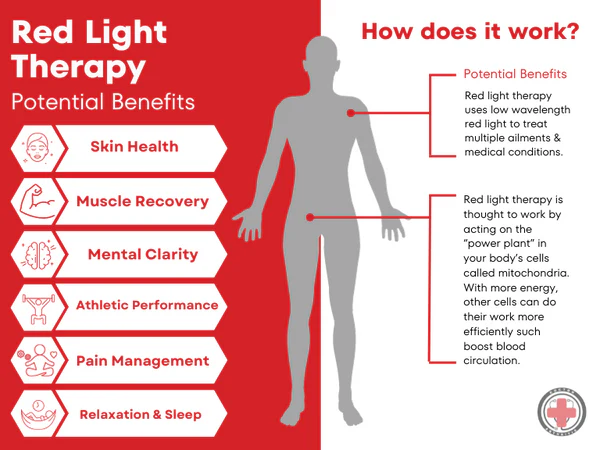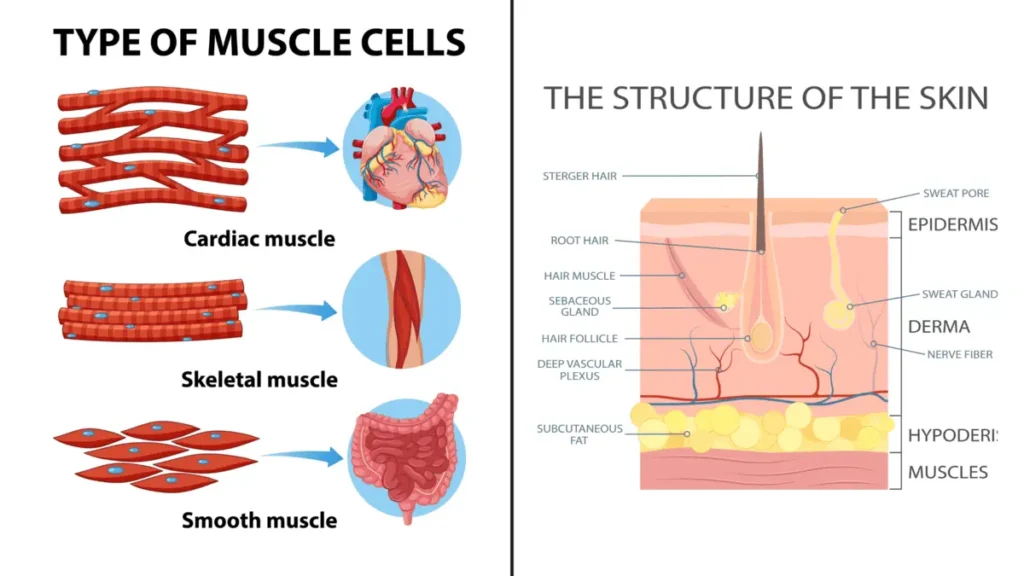Introduction
If you’re battling joint pain, swollen tissues, or chronic inflammatory conditions, you’ve likely asked: How does red light therapy help with inflammation? This non-invasive treatment uses specific red and near-infrared (NIR) wavelengths to penetrate deep into tissues, triggering cellular repair and reducing inflammatory responses. Backed by over 100 clinical studies, it’s revolutionizing pain management—without drugs or side effects. Let’s explore the science, benefits, and real-world applications.

What is Inflammation? The Double-Edged Sword
Inflammation is your body’s natural defense against injury or infection. Acute inflammation (like swelling after a sprain) protects tissues. But chronic inflammation—linked to arthritis, diabetes, and heart disease—becomes destructive. Key players include:
-
Cytokines: Signaling proteins that amplify inflammation.
-
Immune cells: Neutrophils and macrophages that flood injured areas.
-
Oxidative stress: Free radicals damaging cells.
Chronic inflammation affects 60% of Americans. Conventional treatments (NSAIDs, steroids) carry risks like ulcers or dependency.
Red Light Therapy 101: More Than Just a Glow
Red light therapy (RLT), or photobiomodulation, uses LEDs emitting 630–850nm wavelengths. Unlike UV light, it doesn’t burn. Instead, it delivers energy to cells. Key facts:
-
Mechanism: Light photons absorbed by mitochondria boost ATP production (cellular energy).
-
Depth: Red light (630–700nm) reaches skin/muscles; NIR (800–850nm) penetrates bones/joints.
-
Safety: FDA-cleared, non-thermal, and side-effect-free.
✅ Also check: LED Light Therapy at Home for Face Benefits
How Red Light Therapy Targets Inflammation: 3 Proven Mechanisms
🔬 1. Modulates Inflammatory Cytokines
RLT balances pro-inflammatory cytokines (like TNF-α, IL-6) and increases anti-inflammatory ones (IL-10). A 2019 Journal of Photobiology study found red light:
“Reduced edema and inflammatory cell migration by 48% in mice, blocking pain pathways linked to cytokines.”
🛠️ 2. Boosts Cellular Repair & Regeneration
By energizing mitochondria, RLT:
-
Speeds tissue healing via collagen synthesis.
-
Reduces oxidative stress by enhancing antioxidant enzymes.
-
Activates stem cells for damaged tissue repair.
💫 3. Enhances Blood Flow & Circulation
RLT stimulates nitric oxide release, widening blood vessels. This:
-
Flushes out inflammatory metabolites (like bradykinin).
-
Delivers oxygen/nutrients to inflamed areas.
-
Cuts recovery time by 50% in athletes (per Pain Management Nursing studies).

Conditions RLT Improves: Evidence-Backed Results
🦵 Arthritis & Joint Pain
-
Rheumatoid Arthritis: A 2021 meta-analysis showed RLT reduced morning stiffness by 70% and pain by 55%.
-
Osteoarthritis: 660nm light decreased inflammation in knee cartilage cells (Journal of Biophotonics).
✅ Also check: Morpheus8 vs Traditional Microneedling
🏃 Tendinitis & Sports Injuries
RLT lowers inflammation in tendons by:
-
Inhibiting COX-2 (an enzyme driving swelling).
-
Cutting recovery time for Achilles tendinopathy by 40% (British Journal of Sports Medicine).
🧴 Skin Inflammation (Psoriasis, Eczema, Acne)
-
Increases blood flow to skin layers.
-
Reduces T-cell activation (triggers psoriasis flares).
-
Calms acne by suppressing P. acnes bacteria.
📊 Stat: 83% of eczema patients saw reduced redness after 12 RLT sessions (Dermatology Times).
✅ Also check: Best 7 Color LED Light Therapy Chart
RLT vs. Other Anti-Inflammatory Treatments
| Treatment | Effectiveness | Side Effects | Cost/Session |
|---|---|---|---|
| Red Light Therapy | High (long-term) | None | $25–$100 |
| NSAIDs (e.g., Ibuprofen) | Moderate | Stomach ulcers, kidney damage | $0.20–$2 |
| Corticosteroids | High (short-term) | Bone loss, weight gain | $30–$300 |
| Cryotherapy | Moderate | Nerve damage | $50–$100 |
✅ Also check: Cryoskin 3.0
How to Use RLT for Inflammation: Protocols That Work
For chronic inflammation (arthritis, fibromyalgia):
-
Wavelength: 660nm + 850nm combo.
-
Duration: 10–20 mins per area.
-
Frequency: 3–5x/week for 4–12 weeks.
For acute injuries (sprains, post-surgery):
-
Start within 72 hours of injury.
-
Use 5x/week for 2 weeks.
💡 Pro Tip: Pair RLT with compression therapy for 2x faster edema reduction.
✅ Also check: Viora V20 Technology

Debunking 4 RLT Myths
-
Myth: “RLT = Tanning Beds.”
Fact: RLT uses non-UV light—zero cancer risk. -
Myth: “Results Are Placebo.”
Fact: Over 200 studies confirm its biological effects (e.g., increased ATP). -
Myth: “More Power = Better Results.”
Fact: Optimal density is 50–100mW/cm². Higher intensities cause tissue resistance. -
Myth: “RLT Works Overnight.”
Fact: Chronic inflammation requires 4+ weeks of consistent use.
✅ Also check: Common Myths About Cavitation
Case Study: From Pain to Mobility
Sarah, 58, had rheumatoid arthritis for 10 years. After 8 weeks of RLT (3x/week):
-
Pain reduced from 8/10 to 2/10 (VAS scale).
-
Morning stiffness dropped from 60 mins to 10 mins.
-
Medication use cut by 70%.
“I garden again without gloves. It’s not a cure—but it gave me my life back.”
FAQs: Your Inflammation Questions Answered
Q: How deep does red light penetrate?
A: 660nm reaches 5mm (skin/muscles); 850nm hits 40–100mm (joints/organs).
Q: Can I overuse RLT?
A: No. Cells stop absorbing light after saturation (~20 mins/session).
Q: Does it help internal inflammation (e.g., IBD)?
A: Emerging research shows promise for gut inflammation via abdominal treatments.
Q: Is RLT safe with pacemakers?
A: Yes! It’s non-electrical. But avoid chest application if concerned.
✅ Also check: Pacemaker Cost
The Future of Inflammation Management
Studies explore RLT for:
-
Neuroinflammation (Alzheimer’s, dementia).
-
Cardiovascular health (reducing arterial inflammation).
-
Long COVID (resetting immune dysfunction).
As one researcher notes:
“Photobiomodulation is the first therapy that enhances cellular function instead of suppressing symptoms.”
Ready to Reduce Inflammation Naturally?
Red light therapy offers a safe, non-invasive solution for acute and chronic inflammation—backed by science and real-world results. For medical-grade RLT devices trusted by clinics worldwide:
👉 Explore Professional Red Light Devices
✅ Also check: LED Light Therapy Does It Work
References:
-
Pigatto et al., Journal of Photobiology (2019).
-
Avci et al., Seminars in Cutaneous Medicine and Surgery (2013).
-
Hamblin M., Mechanisms of Photobiomodulation (2017).

